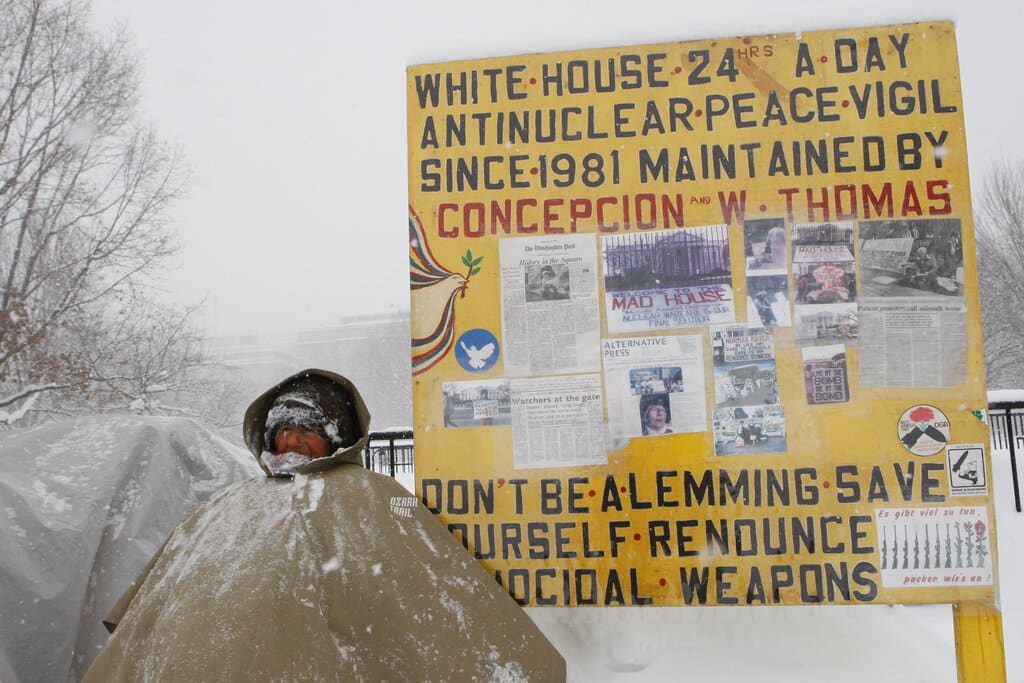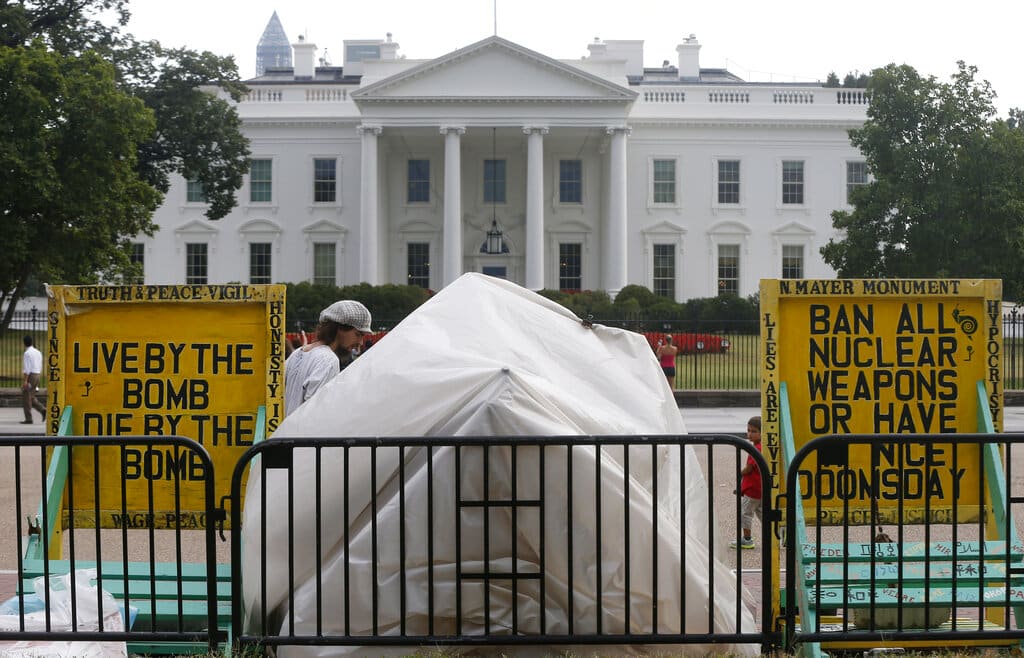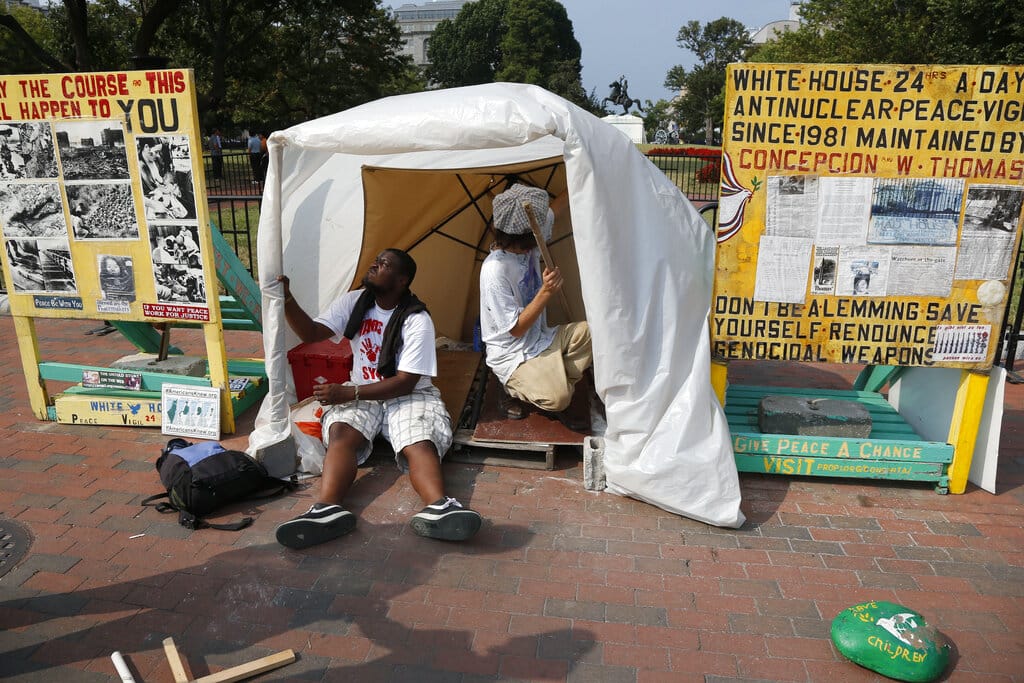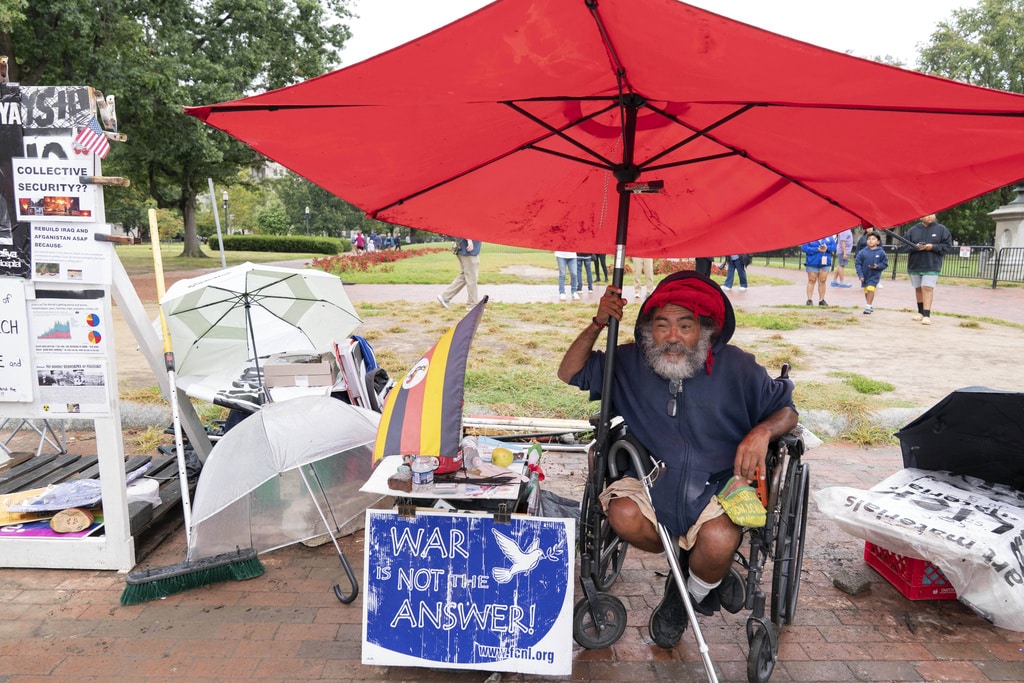Ever since 1981, a peace vigil started by William Thomas has been continually posted in Lafayette Park, across from the White House, with signs and literature calling both for nuclear disarmament and an end to conflict throughout the world. It is believed to be the longest such continuous vigil in the nation’s capital.
On Sunday morning, Sept. 9, 2025, police officials removed a blue tarp that was protecting a small structure from the rain after Will Roosien, a volunteer, refused to do so. He was cuffed after he attempted to stop the officers, but he was not arrested and was later released (Lang 2025).
This kerfuffle occurred during a time when President Donald Trump had ordered the National Guard into the city in the name of law and order and had ordered the removal of homeless individuals from public places. Brian Glenn, a correspondent with Real America’s Voice, had informed Trump of the peace vigil, which he considered to be an “eyesore,” and falsely claimed that it might serve as a haven for rats or for weapons, neither of which was uncovered during the raid.
Supporters have since resumed the vigil, which they believe is protected by First Amendment provisions for freedom of expression.
Peace vigil did not contain bedding and participants weren't panhandling
In City of Grants Pass v. Johnson (2024), the Supreme Court ruled that ordinances regulating public sleeping or camping do not violate the provision against cruel and unusual punishment in the Eighth Amendment.
However, because the D.C. peace vigil site did not contain mattresses or bedding material and its occupants were not soliciting money when it was ordered dismantled by Trump, it does not appear to fall under legislation designed to deal with the unhoused or with panhandling, although it could still be subject to reasonable time, place, and manner restrictions.
In 2020, the vigil was forced to move during confrontations between police and protestors in the aftermath of the murder of George Floyd (Lang 2025).
If the Trump Administration targeted the site as much for its anti-war message as for its alleged use for a homeless camp, the small vigil with its signs would be protected by First Amendment rules against viewpoint or content discrimination.
Whatever the First Amendment implications, the National Park Service dismantled the protest site completely on September 18, 2025, claiming that it was “out of compliance” with regulations and that it constituted an aesthetic blemish to the area and a threat to public safety.
Images of the peace vigil from 2010 and 2013

Peace protestor Concepcion Picciotto sits in the snow as she continues her 24-hour-a-day peace vigil in Lafayette Park across from the White House in Washington, Wednesday, Feb. 10, 2010. Picciotto, an immigrant from Spain who has been active with her peace vigil since 1981, said she has been sleeping under a plastic tarp during the snow storm. A blizzard howled up the East Coast on Wednesday, making roads from Baltimore to New York City so treacherous that even plow drivers pulled over and bringing more misery to a Mid-Atlantic region poised to have its snowiest winter on record. (AP Photo/Charles Dharapak)

The protest shelter for peace protestor Concepcion Picciotto, who holds a constant peace vigil in Lafayette Park across from the White House in Washington, is reassembled after her belongings were returned by Park Police after they were seized by Park Police, Thursday, Sept. 12, 2013. Picciotto, who held a peace vigil outside the White House since 1981, is up and running again after being dismantled for the first time in more than 30 years. AP Photo/Charles Dharapak)

Peace activists Taylor Hall, left, and Rocky Sundquist, right, re-assemble the protest shelter belonging to peace protestor Concepcion Picciotto, not pictured, who holds a constant peace vigil in Lafayette Park across from the White House in Washington, after they were seized by Park Police earlier and returned, Thursday, Sept. 12, 2013. (AP Photo/Charles Dharapak)
John Vile is a political science professor and dean of the Honors College at Middle Tennessee State University.

